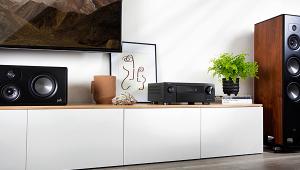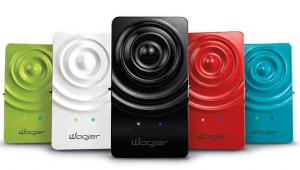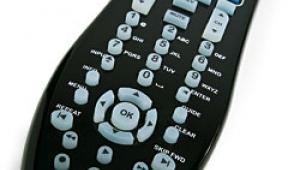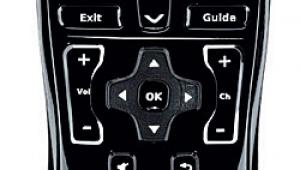Philips RC9800i Touchscreen Universal Remote Control
Say the words "universal remote" to some, and disturbing visions of programming a remote button by button fill their minds. Quite often, after these long, intimate sessions between you and your remotes, the universal remote doesn't perform exactly as expected, and you find yourself keeping the old remotes within reach in case something doesn't work as planned. After some time passes, the old remotes are used more often and the universal remote eventually disappears beneath the couch to be forgotten. So, why bother with another remote that supposedly does everything?

Now They Actually Do Do Everything (Almost)
Universal remotes nowadays strive to be more than just an amalgamation of your previous remotes. While that is very important and is the main criteria to be a universal remote, they now also try to link the house together in various ways. Though Bill Gates might already be light years ahead of the rest of the world in this respect, the RC9800i has a few characteristics that bring us all closer to that fully wired(less) home model.
In recent years, personal computers have been making their way into peoples' home theater systems—and with good reason. Having the ability to put all of your pictures and music on one device that can display them through your home theater system is nothing short of incredible. There are currently two major drawbacks having a PC in your home theater: finding space for the unit and the excessive noise the fans on the majority of these units make.
Philips has added another option with the RC9800i. Using a wireless access point (WAP) and the included software program, Philips Media Manager, the remote can read MP3s and digital pictures on your computer. You can display the pictures on the remote's screen while the remote itself plays MP3s. The audio quality is far from ideal, but you can carry the remote with you and listen to music as long as it doesn't lose connection with your wireless router/hub. To increase the audio quality, though it negates mobility, the charging dock can also act as a wired connection to your home theater.
By using an audio extension cable (costs a few bucks at your local electronics store), you can plug the dock into an RCA audio connection on your receiver. Place the RC9800i into the dock and voila! The music starts playing through your speakers, but its still only stereo sound and not of the highest quality available. This also will not get the pictures on your television, since there is no video connection through the dock. To truly get the most out of the RC9800i, you need a media adapter, which can be purchased from companies such as Linksys and Belkin for a few hundred dollars. With the remote, you will be able to choose songs to play and pictures to display on your home theater system, all in high quality digital, since the new media adapters come with audio/video feeds in both analog and digital. The media adapter could also allow for streaming of WMA and AAC format files. Granted, this will set you back some cash if you do not already own a media adapter, but it is still quite a bit cheaper than buying a home theater PC.
Another option that has recently become popular with universal remotes (armed with Internet connections) is an electronic program guide. By signing up for Philips Electronic Program Guide (the remote includes a free one-year subscription) you can get a customized list of shows on the RC9800i. The information downloads to the remote each night through your wireless network when most people are asleep.
 To further the connectivity throughout the house, the RC9800i breaks the boundaries of being just the living-room remote. It is possible to have the RC9800i control every electronics component in the house. The remote keeps the components organized by what room they are in, which you determine during the initial setup. Just carry the remote from the living room to the bedroom, listening to MP3's on the way, and select the bedroom controls on the remote. Now, whichever controls you programmed into the remote for the bedroom become active. This could be perfect for a bachelor or bachelorette situation, but, with more than a few people living in the house, yells such as "Where's the remote?" could become commonplace.
To further the connectivity throughout the house, the RC9800i breaks the boundaries of being just the living-room remote. It is possible to have the RC9800i control every electronics component in the house. The remote keeps the components organized by what room they are in, which you determine during the initial setup. Just carry the remote from the living room to the bedroom, listening to MP3's on the way, and select the bedroom controls on the remote. Now, whichever controls you programmed into the remote for the bedroom become active. This could be perfect for a bachelor or bachelorette situation, but, with more than a few people living in the house, yells such as "Where's the remote?" could become commonplace.
The Simple Stuff
Regardless of all the bells and whistles, the true test still comes down to whether the product functions properly as a remote control. If the Pronto series of remotes taught us anything, it's that Philips knows how to design a remote control, and the RC9800i is no exception to that rule.
The remote uses a combination of touchscreen and hard buttons, with the majority of menu navigation being accessible through either method. The only times the touchscreen is absolutely necessary are for the specific device controls and the settings screen. For those that might have big fingers, the remote comes with a stylus to facilitate using the screen. Oddly, there is no storage space on the remote for the stylus, causing it to go missing for a few hours at a time every few days. The hard buttons, located on the right side of the remote (possibly frustrating for lefties), consist of the most used controls: navigation, volume, and channel. When pressed, they illuminate with a blue light that makes finding the right button easy in a darkened room.
The RC9800i runs into the same problem that any IR remote will encounter whenever pieces of furniture are in the way, but, if there is a clear path from the remote to the electronics, the remote works wonderfully.
For initial setup, you can expect to be involved for about a half-hour to an hour, but, if you choose to include multiple rooms and options, be prepared for an evening of programming. The Philips does a respectable job of finding the right codes for your old remotes. Occasionally, it finds a code that does not include all of the commands your old remote offers, and sometimes there's no code at all from your old remote that works. In these cases, there is the trusty (and time-consuming) learning method. Philips makes this process easier by color coding the commands that it has learned and those that it hasn't, but it is still a long and arduous process. Unfortunately, the learning function is a drawback on all universal remotes. The most we can ask for is that the process is as painless as possible, which Philips admirably attempts to accomplish.
Once you have entered each device from each room into the remote, there are numerous preset macros that you can select. After answering a few questions, such as which unit controls the volume, the RC9800i adds the new macros to the list for their respective assigned room. This allows the remote to list the macros under each room—watch, listen, and play—and there is no need to deal with each device separately. After selecting one of the options, the remote lists icons for each device associated with the option at the bottom of the display. This facilitates changing between components.
One-Hand versus Two-Hand
There are two camps of remote users—those who use the traditional one-hand versions and those who like the two-hand versions, like the RC9800i. The size and weight of Philips' RC9800i, coupled with the wholehouse features and ease of use, have a distinct chance of swaying those of the former group to the latter. At the very least, it has already converted me.
Overall the RC9800i achieves what it has set out to do—bring electronics together. The connectivity over a wireless network to your PC gives a viable alternative option to HTPC's, while the organization of electronics by room helps to alleviate clutter of remotes around the entire house. Now, if I could only get it to cook my eggs....
Highlights
• Connects the whole house together
• Attractive and functional
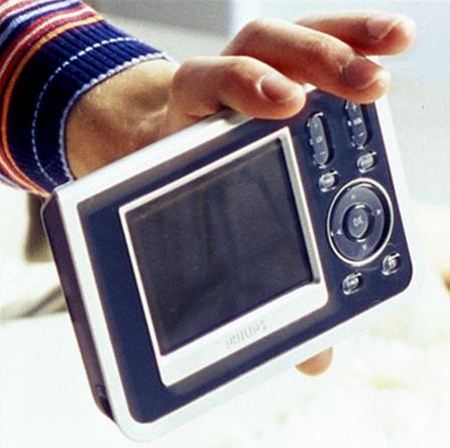
- Log in or register to post comments
